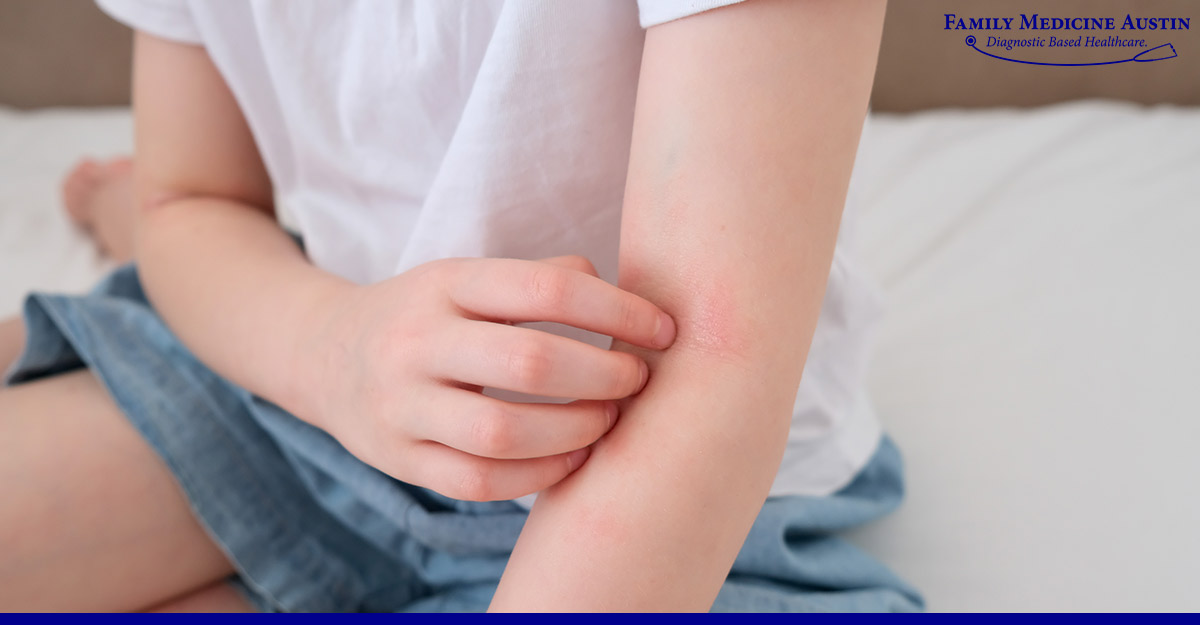
Connective tissues are a group of tissues that hold the body together and maintain its shape by providing cohesion and supporting it. They hold all the cells of our body together and provide tissues the elasticity required to return to their original position. Connective tissues comprise proteins like collagen and elastin and also contain some white blood cells or mast cells.
Autoimmune connective tissue diseases, or ACTD, are a group of diseases having the common symptom of itching. Itching is medically known as pruritus, and autoimmune itching due to connective tissue disease is painful and can have a massive impact on a patient’s life. Pruritus or autoimmune itching can have different amounts of severity and may occur despite not having an autoimmune connective tissue disorder. Even though pruritus is a commonly occurring symptom, it is underrated, and there are only a few trials testing the efficacy of drugs for treating the symptom.
More than 200 different types of connective tissue diseases exist. These may occur due to genetics, environmental factors, or be an autoimmune disease, in which antibodies that usually protect the body against infection, attack themselves. Autoimmune diseases are more common in women than men, with a ratio of 1 to 15 for women to men.
The different types of autoimmune connective tissue diseases are discussed below.
Polymyositis is an autoimmune connective tissue disease that leads to muscle inflammation. The muscles tend to degenerate, and if the condition reaches the skin, the condition is known as dermatomyositis.
The symptoms of polymyositis include exhaustion, fever, difficulty swallowing, weakening of muscles, and loss of weight. People with polymyositis or dermatomyositis can also have cancer.
The autoimmune disease that leads to the inflammation of the membranes of the joints is known as Rheumatoid arthritis. The lungs, heart, or eyes may become affected because of the disease too. Amongst the many symptoms of rheumatoid arthritis, one of them is autoimmune itchy skin which can occur due to arthritis itself, eczema on the body, or due to medication. Some other symptoms of rheumatoid arthritis include:
Sjogren’s Syndrome
Sjogren’s Syndrome is a chronic disease of the connective tissues that occurs in 31% of people with rheumatoid arthritis. In this autoimmune disease, the immune system attacks fluid-producing areas of the body, such as the tear ducts, and salivary glands. It commonly occurs in adults over 40 years, and women are more prone to have it than men. Symptoms of Sjogren’s Syndrome are easy to ignore since you may dismiss them as a common cold or an allergy. Some of the symptoms include:

Scleroderma is a group of diseases in which the skin hardens and causes issues in the blood vessels or digestive tract. Its symptoms include:
Vasculitis is an autoimmune disease of the connective tissues, and inflammation of the blood vessels characterizes the disease.
Medication or infection results in the disease, although some other causes remain unknown. Vasculitis does not only damage the skin but can also affect organs like the kidneys or the heart when the disease gets serious. It leads to hives or red patches that lead to autoimmune itching. Symptoms of vasculitis include:
Vasculitis begins when wheals or skin lesions appear on the body. Hives, which are medically known as urticaria, appear too. These cause autoimmune itchy skin and may also lead to a burning sensation. The patches on the skin are white with a red outline (known as petechia), and can also have red or purple spots due to bleeding inside the skin. If these patches remain for more than 24 hours, it may lead to skin discoloration.
Systemic lupus erythematosus (SLE) is another connective tissue disorder in which the immune system attacks itself. It is also the most commonly occurring form of lupus. It does not only affect the skin, but can also affect the joints, or other organs, including the kidneys and brain. The ratio of the occurrence of SLE in women to men is ten to one. Women between the ages of 15 to 44 usually become victims of the disease. Symptoms of SLE include:
A symptom specific to SLE is a rash in the shape of a butterfly that appears across the nose and cheeks of the patient. This rash usually does not lead to autoimmune itchy skin but becomes more enunciated when exposed directly to sunlight. Some other skin conditions associated with SLE include:
While treating autoimmune diseases, doctors try to bring down the inflammation caused due to the immune system attacking the body. This inflammation can be of the joints, membranes, blood vessels, muscles, etc. Some drugs used to treat autoimmune connective tissue diseases include:
There is no exact cure for autoimmune diseases. However, you may treat their symptoms and manage the disease. Treating the disease may be risky since it increases the chances of infection, and may further worsen the condition. For example, fluid may accumulate around the heart in lupus, and become life-threatening to the patient. Lupus of scleroderma may also lead to kidney failure.
If you experience any of the symptoms, have autoimmune itching, or see abnormal changes in your skin, such as the appearance of a rash, get yourself checked. Our technicians at Family Medicine Austin use the latest technology to get you tested and start your treatment.